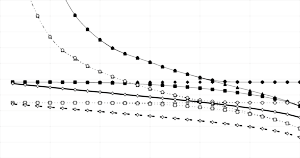Performance analysis of the modified versions of CFAR detectors in multiple-target and nonuniform clutter
DOI:
https://doi.org/10.3103/S0735272713080013Keywords:
adaptive detection techniques, clutter edge, average detection threshold, receiver operating characteristic, target multiplicity environmentsAbstract
A constant false alarm rate (CFAR) in the presence of variable levels of noise is usually a requirement placed on any modern radar. The CA- and OS-CFAR detectors are the most widely used ones in the CFAR world. The cell-averaging (CA) is the optimum CFAR detector in terms of detection probability in homogeneous background when the reference cells have identical, independent and exponentially distributed signals. The ordered-statistic (OS) is an alternative to the CA processor, which trades a small loss in detection performance, relative to the CA scheme, in ideal conditions for much less performance degradation in nonideal background environments. To benefice the merits of these well-known schemes, two modified versions (MX- and MN-CFAR) have been recently suggested.
This paper is devoted to the detection performance evaluation of these modified versions as well as a novel one (ML-CFAR). Exact formulas for their false alarm and detection performances are derived, in the absence as well as in the presence of spurious targets. The results of these performances obtained for Rayleigh clutter and Rayleigh target indicate that the MN-CFAR scheme performs nearly as good as OS detector in the presence of outlying targets and all the developed versions perform much better than that processor when the background environment is homogeneous. When compared to CA-CFAR, the modified schemes perform better in ideal conditions, and behave much better in the presence of interfering targets.
References
- EL MASHADE, M.B. M-sweeps detection analysis of cell-averaging CFAR processors in multiple target situations. IEE Proc. Radar, Sonar and Navigation, v.141, n.2, p.103-108, Apr. 1994. doi: http://dx.doi.org/10.1049/ip-rsn:19949887">10.1049/ip-rsn:19949887.
- EL MASHADE, M.B. Target multiplicity performance analysis of radar CFAR detection techniques for partially correlated chi-square targets. AEÜ, v.56, n.2, p.84-98, Apr. 2002. doi: http://dx.doi.org/10.1078/1434-8411-54100077">10.1078/1434-8411-54100077.
- EL MASHADE, M.B. M-sweeps exact performance analysis of OS modified versions in nonhomogeneous environments. IEICE Trans. Commun., v.E88-B, n.7, p.2918-2927, July 2005.
- HAYKIN, SIMON, Adaptive Radar Signal Processing. John Wiley & Sons Inc., 2006.
- EL MASHADE, M.B. Analysis of cell-averaging based detectors for χ2 fluctuating targets in multitarget environments. Journal of Electronics (China), v.23, n.6, p.853-863, Nov. 2006. doi: http://dx.doi.org/10.1007/s11767-005-0067-0">10.1007/s11767-005-0067-0.
- ZHAO, LEI; LIU, WEIXIAN; FU, JEFFERY S.; SEOW, SIN YONG; WU, XIN. Two new CFAR detectors based on OR-algorithm and AND-algorithm. Proc. of SCOReD 2001, KL, Malaysia. Malaysia, 2010, p.31-34.
- EL MASHADE, M.B. Performance analysis of OS structure of CFAR detectors in fluctuating targets environments. PIER C, v.2, p.127-158, 2008. doi: http://dx.doi.org/10.2528/PIERC08022807">10.2528/PIERC08022807.
- EL MASHADE, M.B. Analysis of adaptive detection of moderately fluctuating radar targets in target multiplicity environments. J. Franklin Inst., v.348, n.6, p.941-972, 2011. doi: http://dx.doi.org/10.1016/j.jfranklin.2011.03.004">10.1016/j.jfranklin.2011.03.004.
- CHEN, BIAO; VARSHNEY, PRAMOD K.; MICHELS, JAMES H. Adaptive CFAR detection for clutter-edge heterogeneity using Bayesian inference. IEEE Trans. Aerosp. Electron. Syst., v.39, n.4, 1462-147, Oct. 2003. doi: http://dx.doi.org/10.1109/TAES.2003.1261145">10.1109/TAES.2003.1261145.


